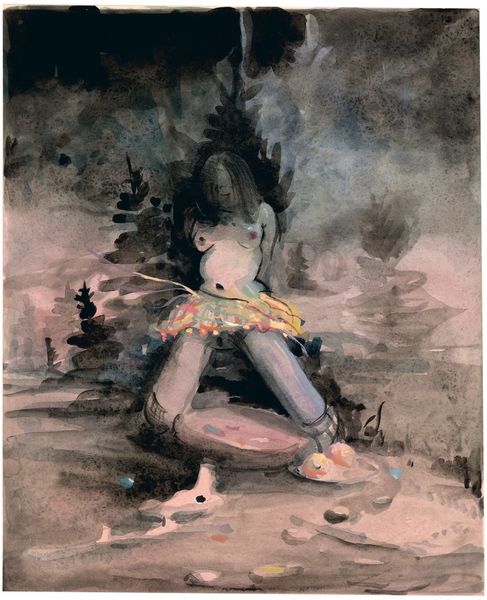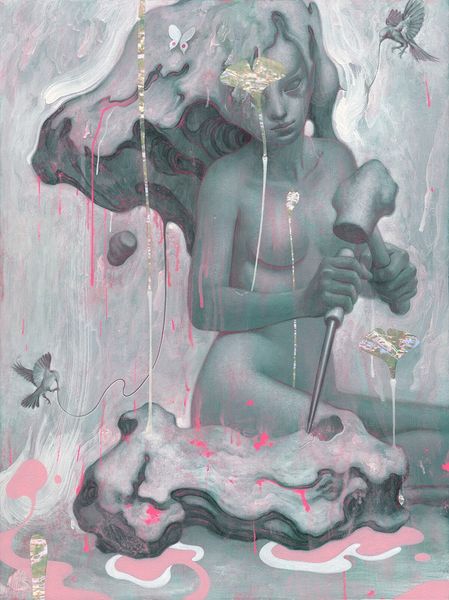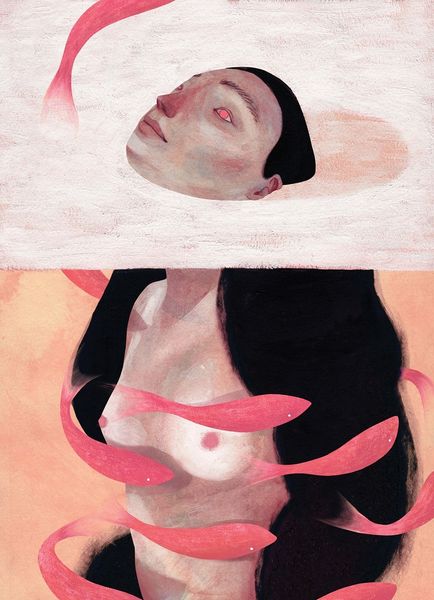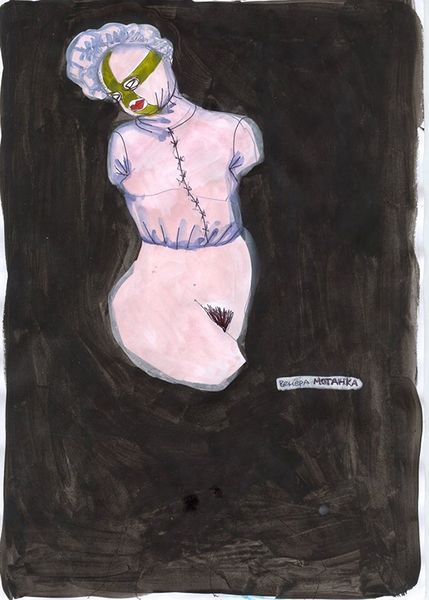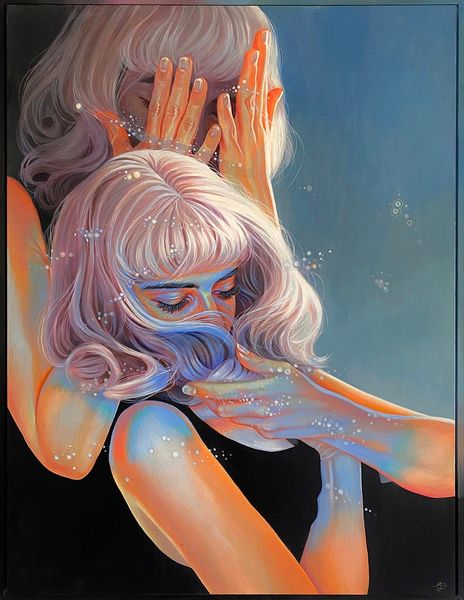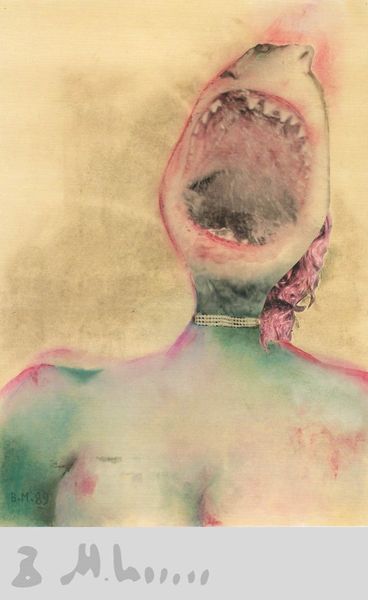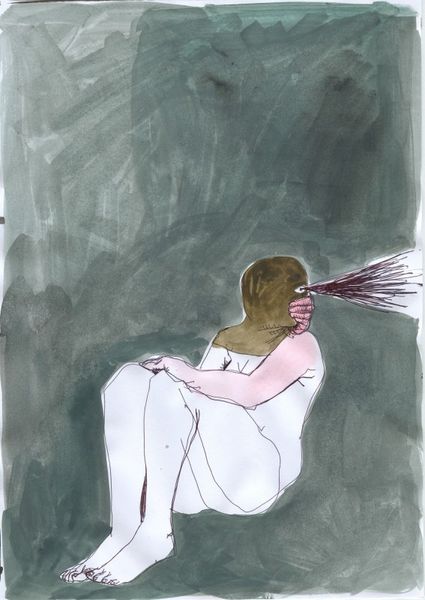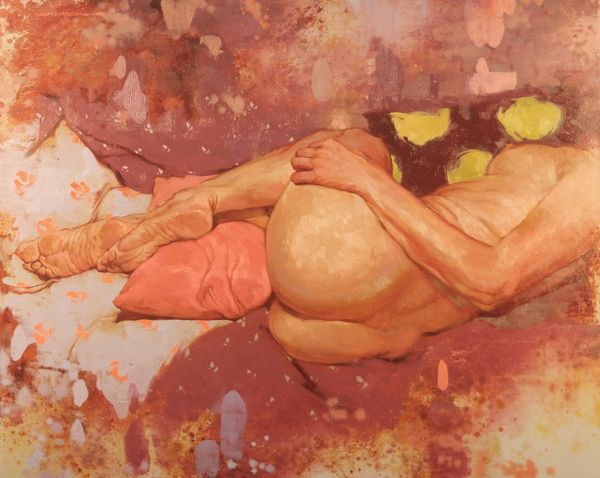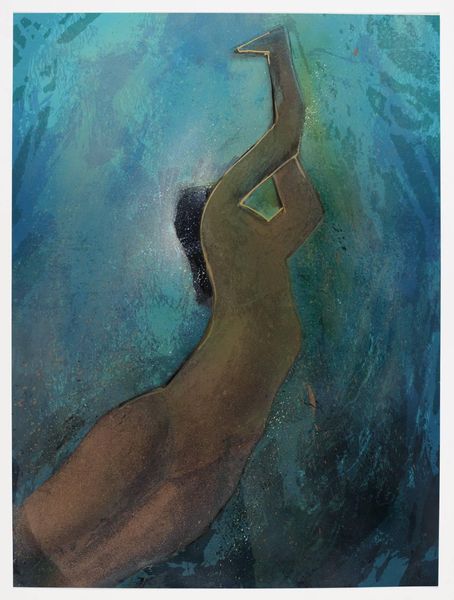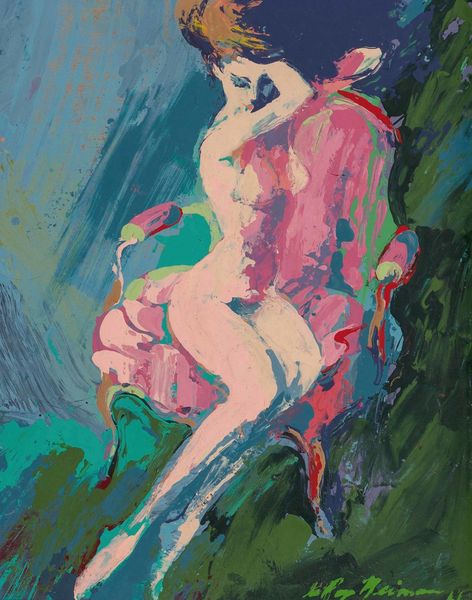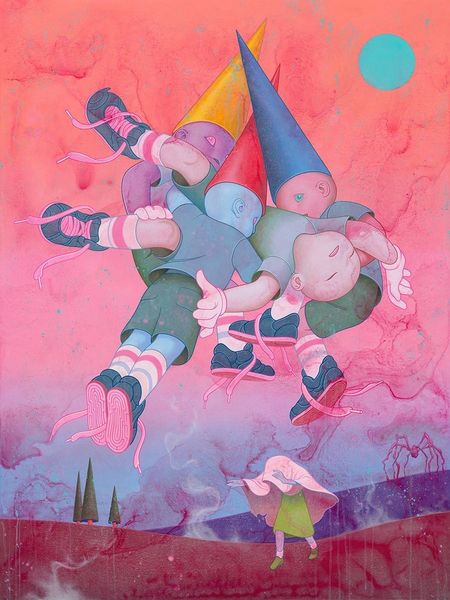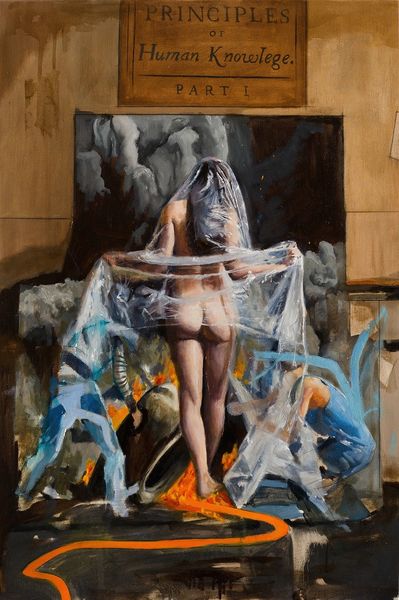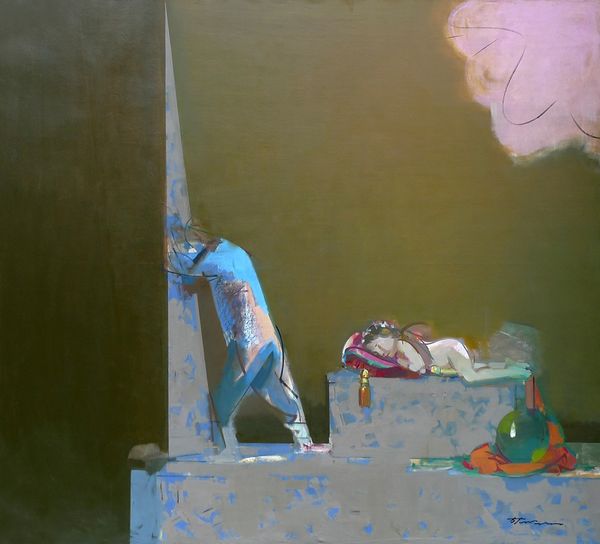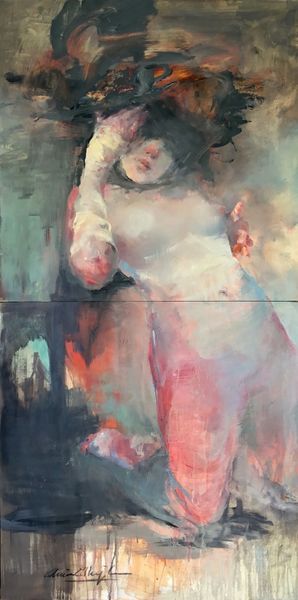
Copyright: Lisa Yuskavage,Fair Use
Art Historian: Here we have Lisa Yuskavage's "Striped Socks," created in 2014. The work features acrylic and oil paint, and perhaps ink, on canvas. Curator: My first impression? The diffused, almost saccharine palette creates an atmosphere of subdued tension. The composition, with its unsettling perspective, amplifies that mood, with the figure compressed at the top and the eye level in the "water." Art Historian: The recurring use of the female figure by Yuskavage offers an open invitation to decipher the image, to see in the subject echoes of archetypes—the eternal feminine, but disrupted, re-presented. The socks themselves—striped in shades of pink, salmon, and orange—function as markers, drawing our gaze toward the figure's most intimate areas. Curator: Intimate indeed. Note how the paint handling becomes deliberately looser, almost dissolving around the figure’s midsection. That technique draws attention and also deflects it, rendering the central form semi-visible. Art Historian: This obscuring is also quite fascinating given art history’s tradition of presenting women as exposed objects for male consumption. Yuskavage subtly upends this history by fragmenting and abstracting the female form to allow it some visual control, especially with the blurred face. The striped socks, raised overhead like triumphant emblems, can perhaps be read as symbols of reclaimed identity, the patterns disrupting conventional representation. Curator: Perhaps. Or consider the artist's deliberate play with visual perspective; the lower body and bare behind is pushed forward to a distorted scale, challenging any straightforward interpretation. Is she provoking a challenge to traditional forms, a response, as you propose, to expectations around the female gaze? Is she using structure to question how the image of women's bodies should be used? The overall lack of a face to express any sentiment makes any reading of the intention complex. Art Historian: Yes, I agree; the absence of facial features transforms the figure into an enigma—an inscrutable image. The muted colors and somewhat obscured view ask us to delve beyond easy interpretations, allowing each viewer to construct meaning from our shared cultural reservoir of symbols related to innocence, sexuality, and autonomy. Curator: Precisely, its aesthetic paradoxes are compelling. We're left grappling with form, function, and our own biases. Art Historian: Thank you. I've definitely gained new thoughts from delving into how this modern take reflects societal memory with you!
Comments
No comments
Be the first to comment and join the conversation on the ultimate creative platform.
